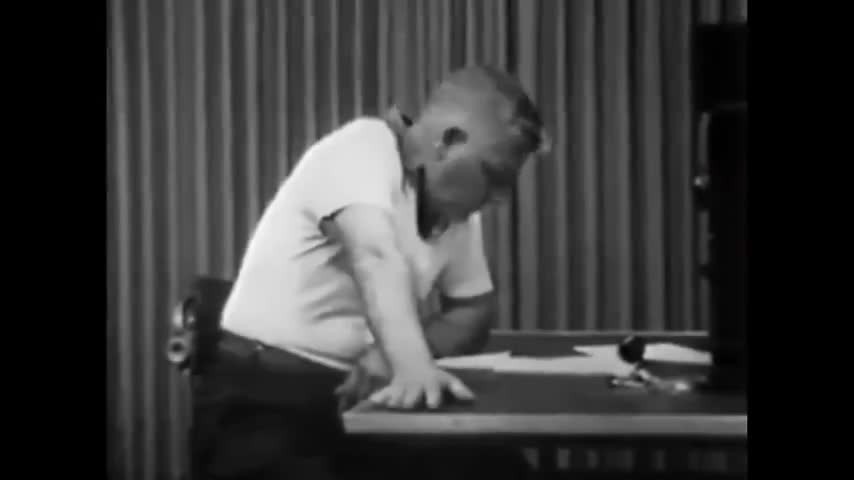Premium Only Content

Obedience - The Milgram Experiment
Milgram experiment
From Wikipedia, the free encyclopedia
For Milgram's other well-known experiment, see Small-world experiment.
"Obedience to Authority" redirects here. For the book, see Obedience to Authority: An Experimental View.
The experimenter (E) orders the teacher (T), the subject of the experiment, to give what the teacher (T) believes are painful electric shocks to a learner (L), who is actually an actor and confederate. The subject is led to believe that for each wrong answer, the learner was receiving actual electric shocks, though in reality there were no such punishments. Being separated from the subject, the confederate set up a tape recorder integrated with the electro-shock generator, which played pre-recorded sounds for each shock level.[1]
The Milgram experiment(s) on obedience to authority figures was a series of social psychology experiments conducted by Yale University psychologist Stanley Milgram. They measured the willingness of study participants, men 20–50 years old from a diverse range of occupations with varying levels of education, to obey an authority figure who instructed them to perform acts conflicting with their personal conscience. Participants were led to believe that they were assisting an unrelated experiment, in which they had to administer electric shocks to a "learner". These fake electric shocks gradually increased to levels that would have been fatal had they been real.[2]
The experiment found, unexpectedly, that a very high proportion of subjects would fully obey the instructions, albeit reluctantly. Milgram first described his research in a 1963 article in the Journal of Abnormal and Social Psychology[1] and later discussed his findings in greater depth in his 1974 book, Obedience to Authority: An Experimental View.[3]
The experiments began in July 1961, in the basement of Linsly-Chittenden Hall at Yale University,[4] three months after the start of the trial of German Nazi war criminal Adolf Eichmann in Jerusalem. Milgram devised his psychological study to explain the psychology of genocide and answer the popular contemporary question: "Could it be that Eichmann and his million accomplices in the Holocaust were just following orders? Could we call them all accomplices?"[5] The experiment was repeated many times around the globe, with fairly consistent results.
-
 1:01
1:01
The World We Live In
9 days agoDon't vaccinate your pets
216 -
 LIVE
LIVE
LFA TV
9 hours agoBREAKING NEWS ALL DAY! | WEDNESDAY 9/24/25
12,961 watching -
 LIVE
LIVE
JULIE GREEN MINISTRIES
1 hour agoLIVE WITH JULIE
18,182 watching -
 LIVE
LIVE
The Chris Salcedo Show
11 hours agoThere Is No Cure For TDS...Except Total Conservative Victory!
1,169 watching -
 20:39
20:39
Producer Michael
19 hours agoEXCLUSIVE PAWN STARS SHOP TOUR WITH RICK HARRISON
29.1K2 -
 14:47
14:47
World2Briggs
16 hours ago $0.52 earnedShocking but True: The 10 States Leading in Murder
11.1K4 -
 8:30
8:30
Faith Frontline
13 hours agoPriest Reveals TERRIFYING Emily Rose Exorcism Details Nobody Talks About
6.09K7 -
 10:54
10:54
NAG Daily
14 hours agoMike on a Bike #5 - Charlie
2.47K6 -
 11:07
11:07
Ken LaCorte: Elephants in Rooms
15 hours ago $0.29 earnedWhy Do Black Athletes Dominate?
3.84K9 -
 LIVE
LIVE
BEK TV
23 hours agoTrent Loos in the Morning - 9/24/2025
208 watching